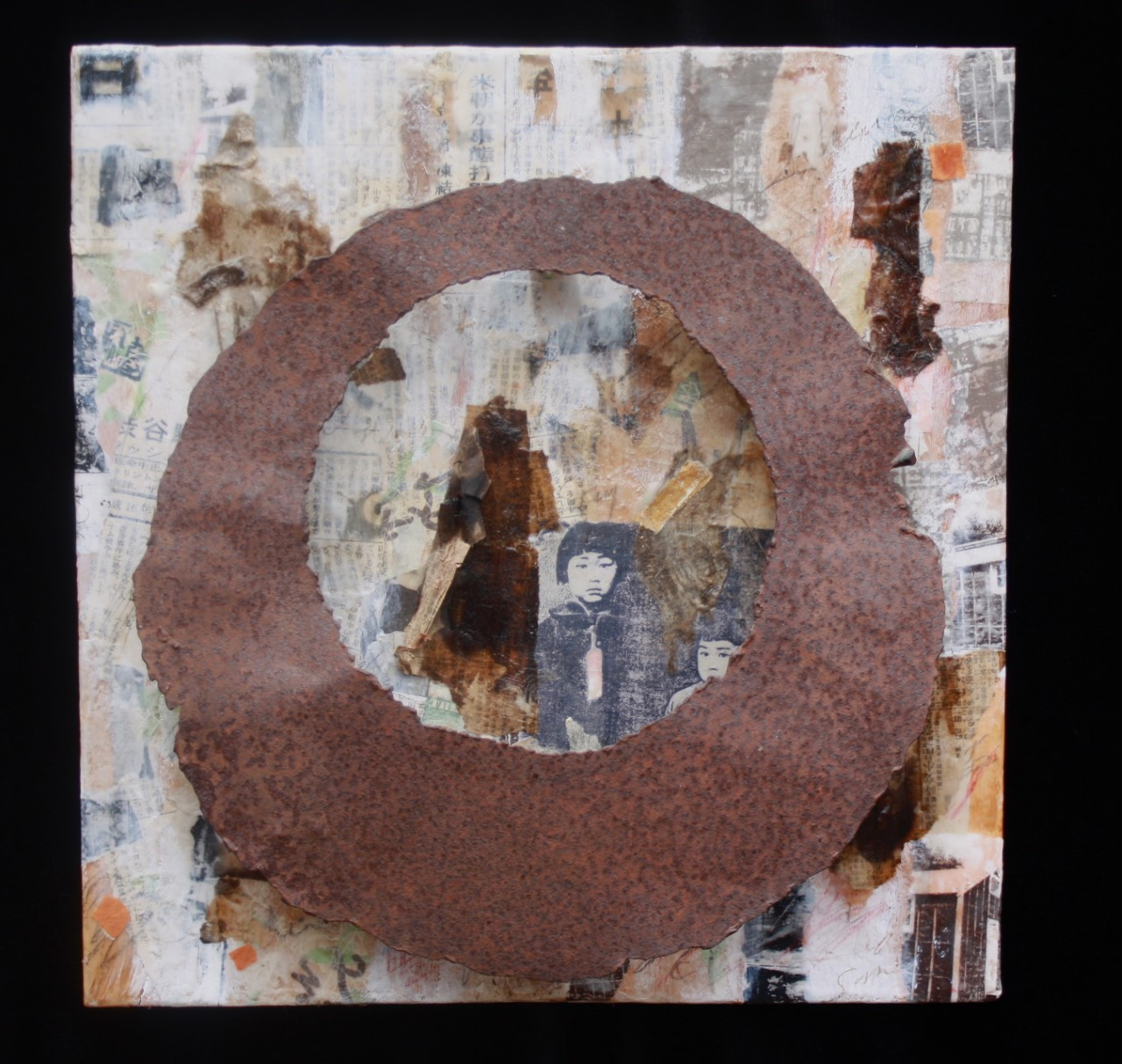
Japanese American Concentration Camp, 2005
assemblage, encaustic, found metal object from Heart Mountain dump, images, photos, 18” x 18” x 4”
American Concentration Camp is an aerial view assemblage of the Topaz, Utah concentration camp, original barrack photos and a Dorothea Lange image of two children awaiting a bus to take them to an assembly center
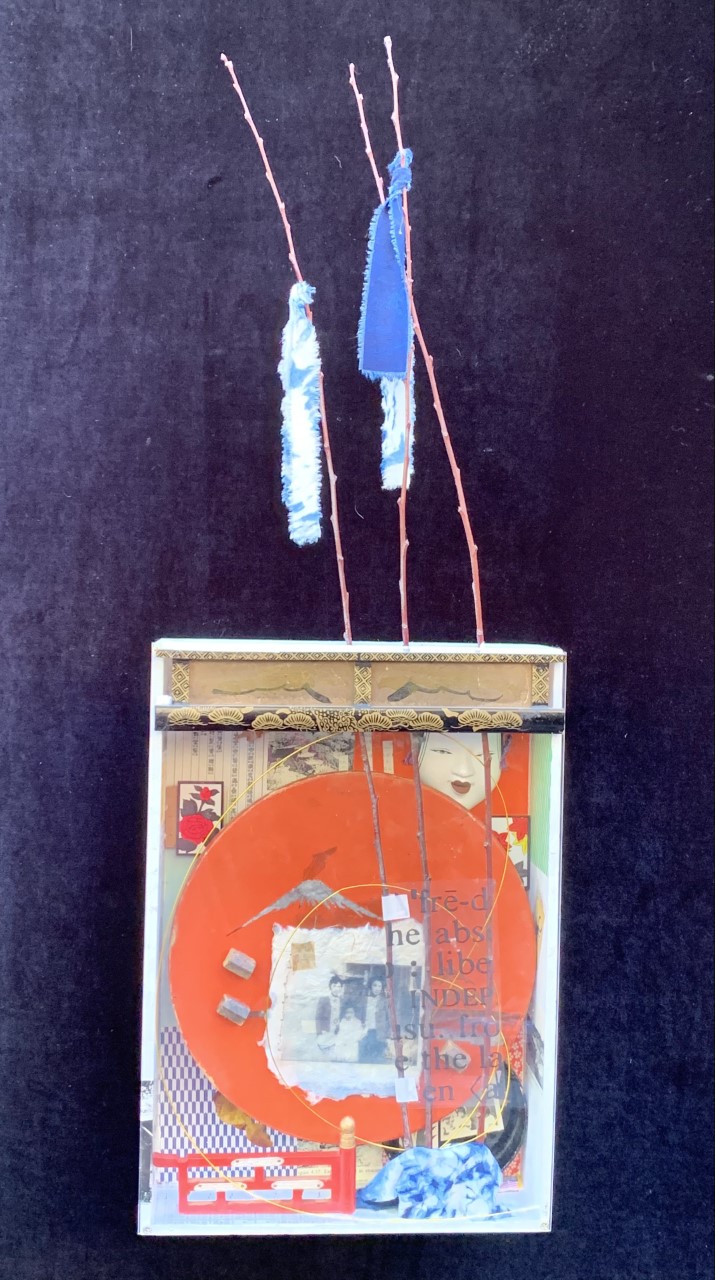
Far from Home, 2009
assemblage, mixed media, photos, found objects, 17” x 11 x 4”
Pictured with two others at the center of this assemblage, Lucien Kubo’s grandmother is standing in front of barracks in Topaz, Utah, a desert concentration camp where they were housed—far from home.
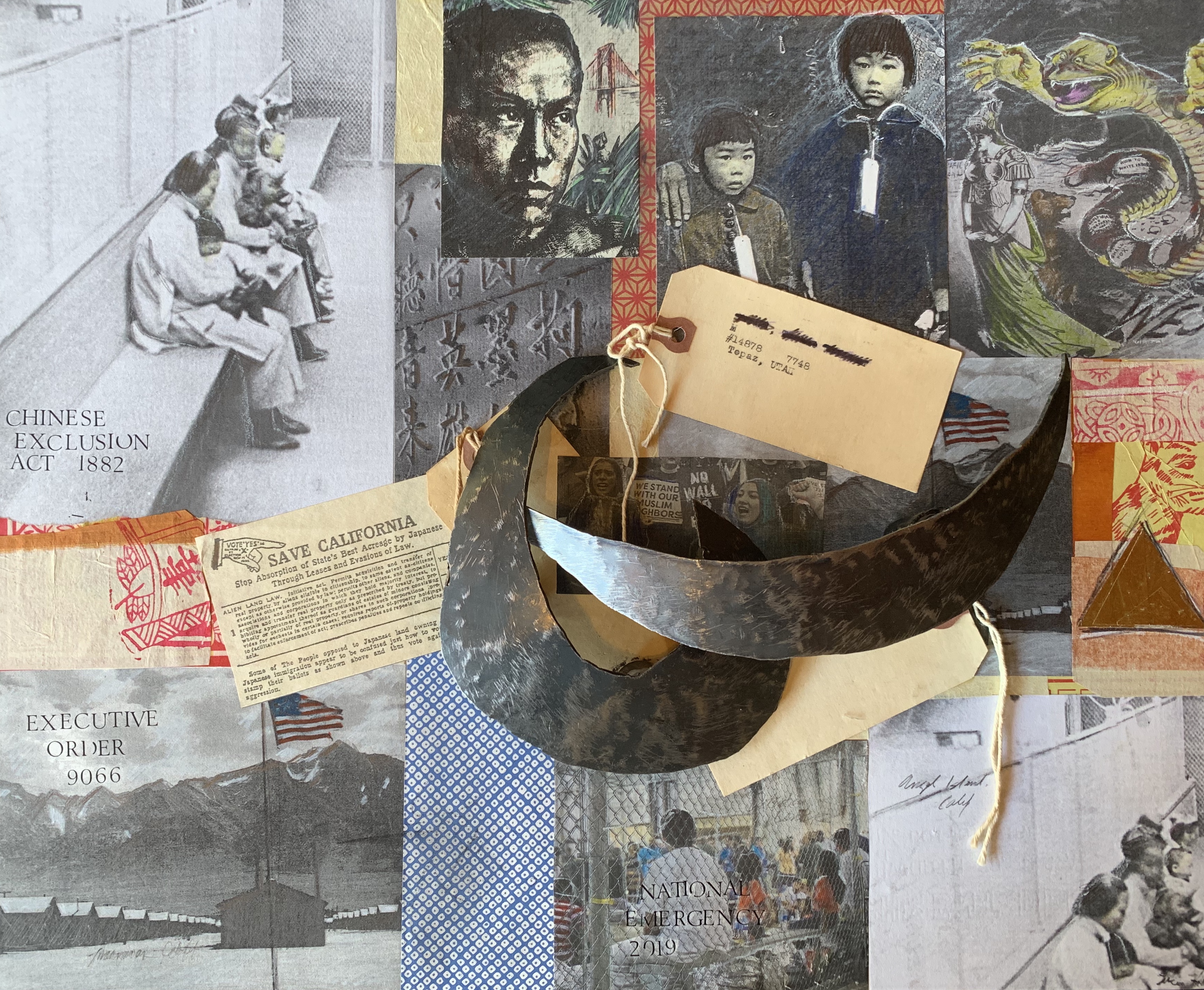
Never Again is Now, 2009
assemblage, mixed media collage, 20” x 24” x 4”
For Lucien Kubo, this assemblage is a reminder that we must learn from past injustices. She states, “During WWII, Japanese immigrants and American citizens of Japanese descent were incarcerated in 10 concentration camps. In2004, a report released by the American Civil Liberties Union in 2004 states that after the 9/11 attacks, the U.S. government unfairly deported thousands of immigrants simply because they were from Muslim countries. And now, Latino/Mexican immigrants are being held in detention centers—families and children being separated.” Kubo comments, “Scapegoating of racial groups, leads to prejudice and violence.”
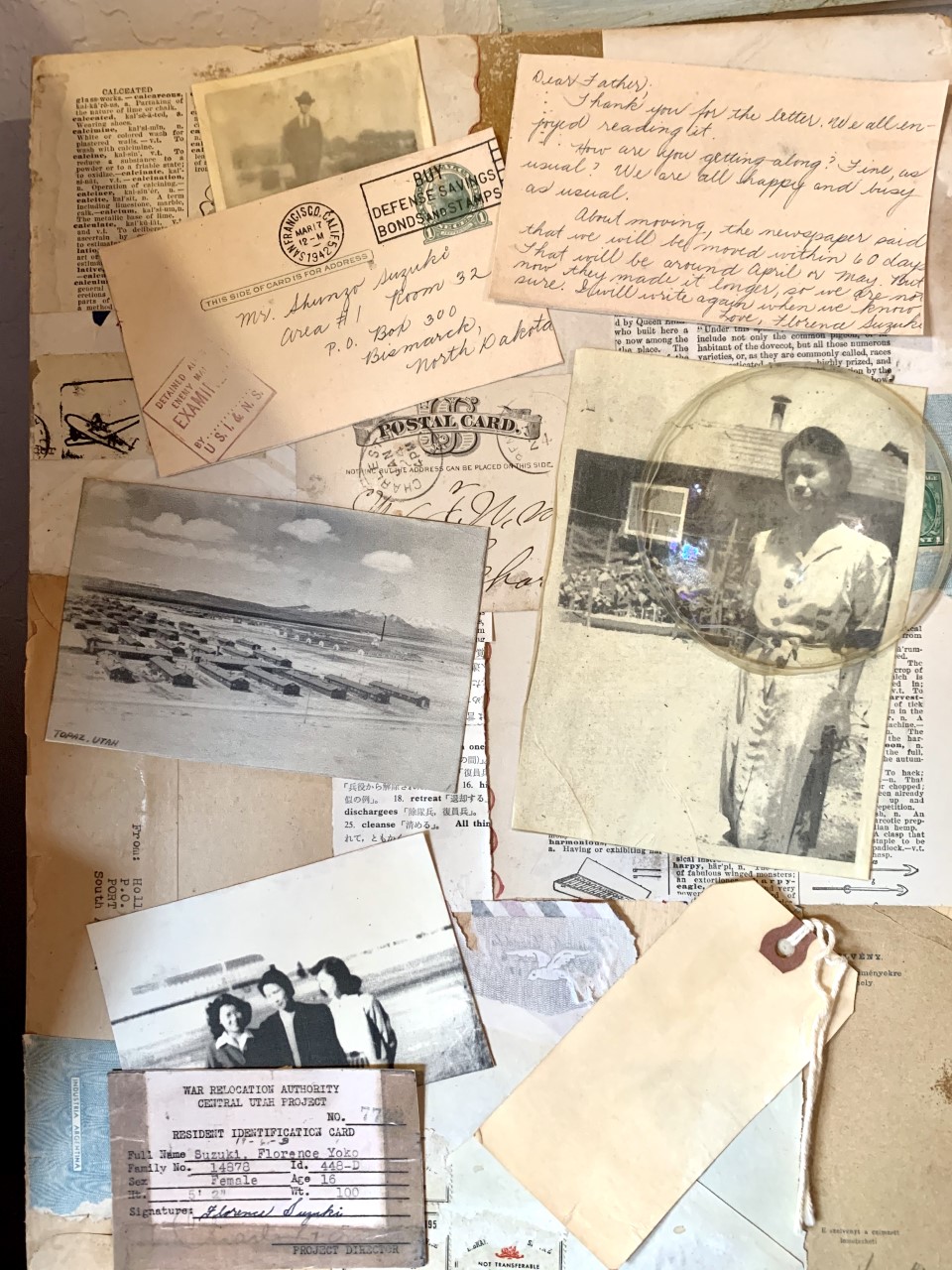
Family memories from Topaz, Utah Concentration Camp, 2019
mixed media, assemblage, collage, 16” x 12” x 3”
Lucien Kubo uses some of the letters her mother wrote to her father in prison. She recounts, “Executive Order 9066 was issued on February 19, 1942. Within days FBI agents came to my grandparent’s home and took my grandfather away. The next day, when the family went the to see him at the immigration center in SF, he had already been put on a train to Bismarck, North Dakota, a high security Federal prison. His crime? He had been a treasurer of a Japanese community organization. He was now considered an ‘Enemy Alien’.
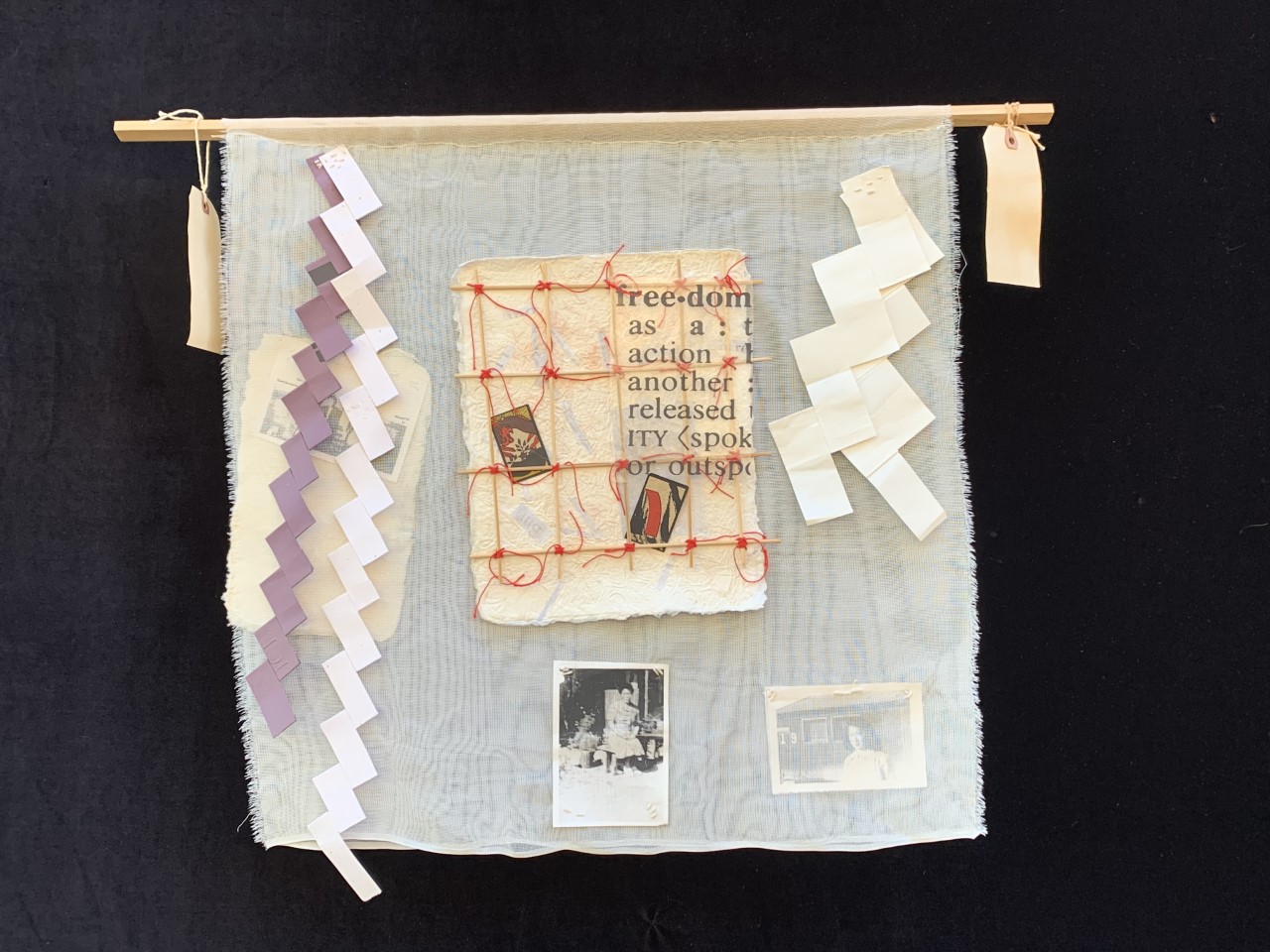 Yearning for Freedom and Moving Forward, 2009
Yearning for Freedom and Moving Forward, 2009
assemblage, mixed media collage, 30” x 30”
“I made this piece to commemorate the concentration camp experience and as a final way to end the concentration camp experience for me. The ‘shide’ a zigzag paper streamer or ‘lightning wands’ are commonly used in Shinto rituals for purification and blessing. It is also used to exorcise any object that is thought to have negative energy.”







